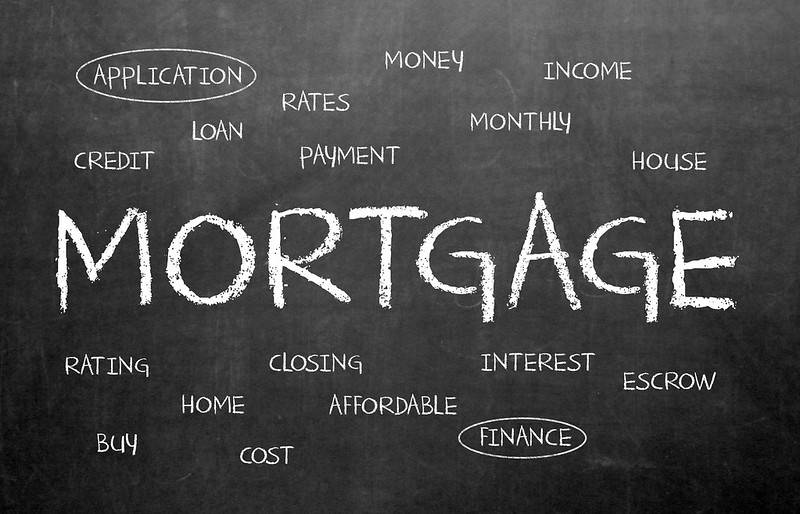Jumbo Loans vs. Conforming
Loans in Ghana and Africa
In the context of mortgage
financing, jumbo loans and conforming loans
are two common types of loan classifications, especially in regions like the
United States and other developed markets. While these loan types may seem
distinct, they are both crucial in terms of mortgage accessibility and
affordability. However, when looking at Ghana and other African
countries, the concept of these loans is relatively new and may differ
in terms of availability, usage, and market applicability.
The main difference between
these two types of loans lies in their size (loan limits) and
how they align with government-set guidelines for mortgage
lending. Understanding the distinctions between jumbo and conforming
loans is essential to understand their role in the real estate and
mortgage sectors in both developed and emerging markets like Ghana and across
Africa.
1. What are Conforming
Loans?
A conforming loan
is a mortgage loan that meets the requirements set by the government or
government-sponsored entities (GSEs), such as the Federal
National Mortgage Association (Fannie Mae) and the Federal
Home Loan Mortgage Corporation (Freddie Mac) in the United States.
These loans must fall under certain loan limit thresholds and
meet guidelines that ensure they are relatively low-risk investments for
lenders.
a. Key Features of Conforming Loans
- Loan Limits: The size of a conforming loan must stay
within the limits established by the relevant regulatory authorities. In
the case of Fannie Mae and Freddie Mac, these limits vary by region but
are set to ensure that the loans remain within the range that is
considered affordable for the average borrower.
- Standard Qualification Criteria: Conforming loans
typically have more stringent eligibility requirements, including
credit score thresholds, debt-to-income ratios, and down payment
percentages. These criteria are set to ensure that the borrower is
financially stable enough to repay the loan.
- Government Support: In some cases, conforming loans
may be backed or insured by the government, which reduces the risk to
lenders, allowing them to offer more favorable interest rates.
b. Relevance of Conforming Loans in Ghana and
Africa
While the concept of conforming
loans as seen in the U.S. may not directly apply in Ghana or many African
nations, the idea of having a regulated standard loan with
government oversight has similarities to certain types of affordable housing
programs. In Ghana, government-backed initiatives like the National
Housing and Mortgage Fund (NHMF) and the Affordable Housing
Scheme aim to provide home financing within a specific price range,
similar to the role of conforming loans in the U.S.
These loans in Ghana and many
African countries are designed to provide access to homeownership for low-
and middle-income individuals. Although the regulatory
guidelines for these loans may not be as formalized as in developed
markets, the general principles align with the idea of affordable
lending with lower credit requirements.
2. What are Jumbo
Loans?
A jumbo loan is
a mortgage loan that exceeds the maximum loan limits set by
government-sponsored entities (GSEs) or regulatory authorities. In the
United States, a loan is considered a jumbo loan if it surpasses the limits
established by Fannie Mae and Freddie Mac for conforming loans. Jumbo loans are
typically used to finance more expensive properties that
cannot be funded by conventional or conforming loans.
a. Key Features of Jumbo Loans
- Large Loan Amounts: Jumbo loans allow for much
larger loan amounts compared to conforming loans. This makes them suitable
for buying high-value homes that are above the conventional loan limits.
- Stricter Qualification Criteria: Because of their
higher risk and larger size, jumbo loans tend to have more stringent
qualification criteria. This may include higher credit
scores, larger down payments, and lower debt-to-income ratios. Lenders
view jumbo loans as riskier because they are not insured or backed by
government agencies.
- Higher Interest Rates: Due to the larger loan
amounts and the fact that jumbo loans are not eligible for government
backing, these loans often come with higher interest rates to
compensate lenders for the increased risk.
- No Government Support: Unlike conforming loans,
jumbo loans are not government-backed, meaning lenders must rely
solely on their own assessment of the borrower’s ability to repay the
loan.
b. Relevance of Jumbo Loans in Ghana and
Africa
Jumbo loans are generally not
common in Ghana and many parts of Africa. The real estate market in
these regions does not have the same scale as that of developed countries, and
the majority of housing transactions are much smaller in value. High-end
luxury homes, which would typically require jumbo loans in more
developed countries, are rarer in many African nations.
However, in some African
countries, particularly those with more developed real estate markets like South
Africa, there are emerging segments of the market where luxury
homes or commercial properties may require financing
that exceeds the limits of typical conventional mortgages. In
such cases, the concept of a jumbo loan could become more
prevalent in the future as demand for higher-value properties increases.
Jumbo loans in Africa,
especially in the context of Ghana, would likely be limited to the
high-income or expatriate market, where large loans for luxury
homes or commercial developments might be needed. However, for the
vast majority of the population, financing options would be more
focused on affordable housing solutions and government-backed mortgage
schemes.
3. Jumbo Loans vs.
Conforming Loans: A Comparison in the African Context
To understand how jumbo and
conforming loans differ, it’s helpful to compare their characteristics:
|
Feature |
Conforming Loans |
Jumbo Loans |
|
Loan Limits |
Must adhere to
maximum limits set by authorities |
Exceeds the
maximum limits set by authorities |
|
Eligibility |
Easier to
qualify for with lower credit requirements |
Stricter
eligibility, higher credit score, larger down payment |
|
Interest Rates |
Generally
lower interest rates |
Typically
higher interest rates |
|
Government Backing |
Often backed
or insured by government agencies |
Not
government-backed |
|
Size of Loan |
Typically used
for median-priced homes |
Used for
high-value properties |
|
Risk Level |
Lower risk for
lenders |
Higher risk
for lenders, due to larger loan amounts |
|
Common Usage |
Common for
first-time homebuyers or low- to middle-income families |
Used for
luxury or high-value homes and investments |
a. In Ghana and Africa
- Conforming loans in Ghana and many African countries
are typically offered through government-backed housing programs like
the NHMF, which provides more affordable housing finance. These loans are
geared toward low- and middle-income borrowers who need financing
for modest
homes.
- On the other hand, jumbo loans are still a niche product
in most African countries, including Ghana. However, the rise of more
sophisticated financial markets and the growing demand for luxury real estate
in cities like Accra, Lagos, and Nairobi may lead to an increasing
demand for jumbo loans in the future, especially for high-net-worth
individuals and commercial developers.
4. Challenges and
Opportunities in the African Mortgage Market
In the African mortgage market,
especially in countries like Ghana, there are challenges and opportunities tied
to both conforming and jumbo loans:
a. Challenges
- Limited Availability of Jumbo Loans: Due to the smaller market size
and lack
of sufficient wealth among the general population, jumbo
loans are rare in most African countries, and high-value mortgages are
difficult to obtain.
- Access to Credit: In many African countries,
including Ghana, access to formal credit remains a major
barrier for many people. The lack of credit history and high
interest rates for conventional loans makes it difficult for many to
qualify for either conforming or jumbo loans.
b. Opportunities
- Growing Middle-Class: As Africa’s middle class
continues to grow, there is an increasing demand for affordable housing.
This presents an opportunity to expand the availability of conforming loans
through government-backed initiatives.
- Luxury Real Estate Markets: As urbanization
increases, there is potential for the emergence of a
market for jumbo loans, particularly in major cities
like Accra,
Lagos,
and Nairobi,
where high-end real estate is on the rise.
5. Conclusion
In Ghana and much of Africa, conforming
loans are more common and widely used for affordable housing
financing, especially in partnership with government-backed schemes.
These loans make homeownership accessible to low- and middle-income earners. On
the other hand, jumbo loans are still emerging in markets like
South Africa and in major urban centers across Africa, mainly serving high-net-worth
individuals and luxury real estate investors.
As African nations continue to
grow economically and develop their real estate markets, both types of loans
may become increasingly important, helping address the housing deficit
while also catering to the luxury market. However, significant
challenges, such as limited credit access and low
availability of high-value properties, will need to be addressed to
fully realize the potential of these loan types in Africa’s mortgage landscape.


